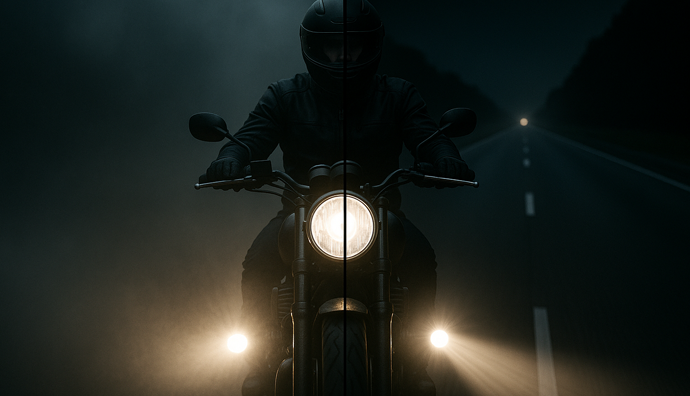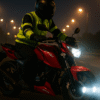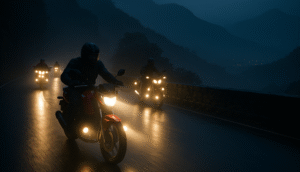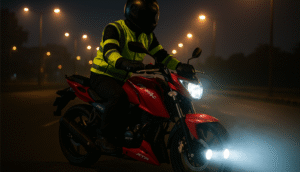
Fog Lights vs Spot Lights: Which One Does Your Bike Need?
What Are Fog Lights?
Fog lights are designed to spread a wide, low beam that cuts through mist, rain, or dust. Instead of pointing far ahead, they illuminate the area right in front of your bike, helping you see potholes, obstacles, and the road edges clearly.
Best For:
Riding in fog, rain, or dusty conditions
City commutes during monsoons
Extra visibility on poorly lit roads
What Are Spot Lights?
Spot lights (also called driving lights) create a narrow, focused beam that throws light much further down the road. They’re ideal for long-distance rides on highways or rural areas where you need to see what’s coming far ahead.
Best For:
Highway touring and long rides
Open rural roads with minimal traffic
Riders who want maximum distance visibility
Fog Lights vs Spot Lights
| Feature | Fog Lights | Spot Lights |
|---|---|---|
| Beam Pattern | Wide, low beam | Narrow, focused beam |
| Best For | Fog, rain, dusty roads | Highways, rural roads |
| Range | Short (close visibility) | Long (far visibility) |
| Weather Performance | Excellent in fog/rain | Limited in fog/rain |
| Ideal Riding Condition | City commutes, poorly lit roads | Highway touring, night rides |
Tip: Many riders combine both—fog lights for near-field visibility + spot lights for long-range throw.
Which One Should You Choose?
If you mostly ride in cities or areas with fog/rain: Go for fog lights for their wide, low beam.
If you’re a highway rider or night tourer: Choose spot lights for long-distance illumination.
For the best of both worlds: Many riders combine both — fog lights for close visibility and spot lights for long-range coverage.




